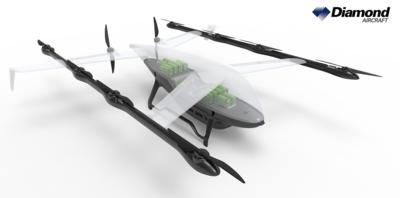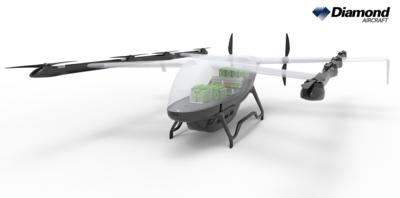Thu, May 01, 2025
Gaseous Hydrogen May Not Be As Cool as Liquid, But it’s Got Potential
Diamond Aircraft has announced a project hybrid aviation powertrains, entering into a “pathbreaking Austrian Research Promotion Agency funded project to advance gaseous hydrogen’s potential as a fuel source in General Aviation.”

The end result will be the ‘H2EDT’ (Hydrogen-based Twin-engine Electrification and Digitalization Testbed). The brand is excited about the possibilities of gas hydrogen tech, given its obvious environmental benefits. If used to its full potential, a hydrogen system produces no greenhouse gas emissions, while bottling up energy from other alternative and renewable forms of power generation. Diamond may seem a little behind the curve to keep working on gaseous hydrogen, given the current trend in the market, but they appear to feel pretty confident they can make the numbers hash out just fine. Gases are inevitably a lower-density form of energy compared to liquids, but the added complexity of maintaining hydrogen in liquid form in a lightweight GA aircraft may not be worth the trouble.
Diamond thinks they can tackle the energy issue by adding in a bank of electric batteries to help cover up the hydrogen system’s weaknesses. A full hydrogen gas powertrain would be “too heavy to cover peak power demands”, while adding additional problems thanks the volume needed for a full flight. Keeping that H2 gas nice and cold, in addition to crash-safe writes a whole lot of engineering checks a small GA airframe just can’t cash. The provision of energy dense batteries would help to cover the need for peak power during takeoff and climb, with fallback generation recharging them off the hydrogen system in cruise. Originally, Diamond planned to make a testbed using a typical twin-engine aircraft, much like their DA42. Ultimately, given the fervor surrounding Advanced Air Mobility, the firm decided to jump into the future with both feet, making it a VTOL with “up to 10 motors”.

If successful, Diamond says they just might do a follow-up hydrogen project on a full-size demonstrator using a DA40 or DA42. Having a standard aircraft in the pipeline would allow them to work out what kind of certification and design guidelines a full, follow-on hydrogen hybrid aircraft would have. But, all that lies on the other side of a finished H2EDT VTOL aircraft. So far, the brand has digitally mocked up a demonstrator using a half-scale CS-23 VTOL aircraft, so there’s plenty more to do.
More News
“The F/A-18E was actively under tow in the hangar bay when the move crew lost control of the aircraft. The aircraft and tow tractor were lost overboard. Sailors towing the ai>[...]
Aero Linx: AERObridge AERObridge is a 501c3 charity organization where we aim to aid communities hit hard during a disaster. From Hurricane Katrina to COVID19, AERObridge had a han>[...]
Also: Flight Hour Reqs, Gulfstream Records, Boeing NGAD Award, TX Pilot Jailed The staff of Aero-News is heartbroken to report that Rob Holland lost his life in an as yet inexplica>[...]
Also: Boeing Reports, Airbus-Spirit, USAF CV-22 Milestone, ANN/Oshkosh 2025 Stringers A HEXA electric vertical takeoff and landing (eVTOL) aircraft experienced a component failure >[...]
Also: Airplane-Helo Risks, AirVenture Showcasing Korean War, United Purchasing JetZero Birds, Boom Gears Up The FAA announced that the agency will not move ahead with its policy of>[...]
 Aero-News: Quote of the Day (05.01.25)
Aero-News: Quote of the Day (05.01.25) ANN's Daily Aero-Linx (05.01.25)
ANN's Daily Aero-Linx (05.01.25) Airborne 04.25.25: Rob Holland Goes West, NYC Heli Ban, Jepp/ForeFlight
Airborne 04.25.25: Rob Holland Goes West, NYC Heli Ban, Jepp/ForeFlight Airborne 04.30.25: LIFT eVTOL Accident, Musk-FAA NDAs, Med Applications
Airborne 04.30.25: LIFT eVTOL Accident, Musk-FAA NDAs, Med Applications Airborne 04.28.25: Onerous FAA Med Policy, Aviation WX, NFL Team v AeroVanti
Airborne 04.28.25: Onerous FAA Med Policy, Aviation WX, NFL Team v AeroVanti




